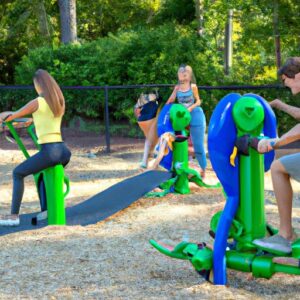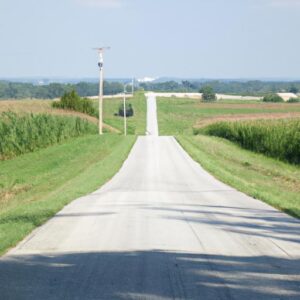Parks and recreation play a vital role in our communities, providing spaces for leisure, physical activity, and community engagement. Have you ever wondered who is in charge of these important public assets? In this article, let’s uncover the key players responsible for parks and recreation and understand their roles and responsibilities.
Introduction
A. Importance of Parks and Recreation
Parks and recreation areas have a profound impact on our well-being and quality of life. These spaces offer a sanctuary from the hustle and bustle of daily life, allowing us to reconnect with nature, engage in physical activities, and foster a sense of community. Whether it’s a local park, a playground, or a vast recreational facility, these areas serve as a vital resource for individuals of all ages.
B. Understanding the Key Players
To effectively manage parks and recreation, various entities and individuals work together harmoniously. Understanding the roles of these key players helps ensure the smooth operation and enhancement of these spaces. Municipal governments, parks and recreation departments, and dedicated directors all play a crucial part in overseeing and maintaining these valuable assets.
Now, let’s delve deeper into the world of parks and recreation, starting with the role of municipal governments in Section Stay tuned to discover the intricacies of this fascinating domain and gain insights into who is truly in charge of parks and recreation.
Municipal Government and Parks and Recreation
Parks and recreation management falls under the purview of local government, which plays a significant role in ensuring the provision and maintenance of these essential community spaces. Let’s explore the responsibilities, functions, and funding sources associated with the involvement of municipal governments in parks and recreation.
A. Role of Local Government in Parks and Recreation
Local government entities, such as city councils or county commissions, assume a critical role in overseeing parks and recreation. They are responsible for creating policies, regulations, and strategic plans that guide the development, maintenance, and improvement of these valuable assets. By actively engaging with the community, local governments can align park management strategies with the specific needs and desires of residents.
B. Responsibilities and Functions
Municipal governments undertake a wide range of responsibilities and functions concerning parks and recreation. These include but are not limited to:
-
Planning and Development: Local governments assess the need for new parks and recreation facilities, identify suitable locations, and plan for their development to cater to the growing demands of the community.
-
Maintenance and Operations: Ensuring the cleanliness, safety, and functionality of parks and recreation facilities is a crucial responsibility of local government. This involves regular maintenance, repairs, and upgrades to preserve the quality and accessibility of these spaces.
-
Programming and Events: Municipalities organize various recreational programs, events, and activities to engage residents and promote community involvement. These initiatives foster social interaction, physical fitness, and cultural enrichment.
C. Funding Sources
Securing adequate funding is a cornerstone for the successful management of parks and recreation. Local governments employ various funding sources, including:
-
Tax Revenue: Municipalities allocate a portion of their tax revenue to support parks and recreation initiatives. This may include property taxes, sales taxes, or dedicated park and recreation levies.
-
Grants and Partnerships: Local governments actively pursue grants from federal, state, or private entities to supplement their park budgets. Partnerships with non-profit organizations, corporate sponsors, and community foundations also contribute significantly to funding.
-
User Fees and Rentals: Charging user fees for certain facilities, amenities, or programs generates revenue that can be reinvested into maintaining and improving parks and recreation areas.
By understanding the vital role of municipal governments in parks and recreation, we can appreciate the efforts and resources invested in creating vibrant and inviting spaces for our communities. Next, let’s explore the inner workings of parks and recreation departments in Section
Parks and Recreation Departments
Parks and Recreation Departments are instrumental in managing and maintaining the parks and recreational facilities within a municipality. Let’s explore the various aspects of these departments to gain a better understanding of their significance in the management of public spaces.
A. Overview of Parks and Recreation Departments
Parks and Recreation Departments are governmental bodies responsible for the planning, development, and maintenance of parks, recreational facilities, and open spaces. These departments work closely with other stakeholders to ensure the provision of quality recreational opportunities for residents and visitors alike.
B. Organizational Structure
The organizational structure of Parks and Recreation Departments varies depending on the size and complexity of the municipality. Typically, these departments consist of various divisions or units, each focusing on specific aspects of park management. Common divisions include park operations, programming and events, maintenance, and administration.
Within the organizational structure, there is usually a hierarchy, with a director or superintendent overseeing the entire department. This individual plays a crucial role in decision-making, resource allocation, and strategic planning to enhance the overall park experience.
C. Duties and Responsibilities
Parks and Recreation Departments have a wide range of duties and responsibilities. These include maintaining and improving parks, trails, and open spaces, managing recreational facilities, organizing community events and programs, ensuring public safety within park areas, and collaborating with other agencies and organizations to enhance the recreational opportunities available.
Additionally, Parks and Recreation Departments often engage in long-term planning and development initiatives, seeking to improve existing facilities, create new parks, and adapt to the evolving needs of the community. These departments strive to provide inclusive and accessible recreational opportunities for all residents, recognizing the importance of diversity and equity in park services.
Now that we have explored the role of Parks and Recreation Departments, let’s move on to Section IV, where we will uncover the crucial role of the Parks and Recreation Director. Stay tuned to learn more about the individual responsible for overseeing these departments and shaping the future of parks and recreation.
Parks and Recreation Director
A parks and recreation director serves as a pivotal figure in the management and administration of parks and recreational facilities. This section will shed light on the key responsibilities, qualifications, and decision-making authority held by these directors.
A. Role and Responsibilities of the Director
The parks and recreation director is tasked with overseeing the day-to-day operations of parks and recreational areas. They are responsible for developing and implementing strategies to enhance the visitor experience, maintain the facilities, and ensure the safety of patrons. These directors often collaborate with other departments and stakeholders to organize community events, sports programs, and cultural activities within the parks.
Furthermore, the director plays a crucial role in budget management, allocating resources effectively to maintain and improve the parks and recreation facilities. They also engage in long-term planning, identifying areas for development, and implementing strategies for sustainable growth.
B. Qualifications and Skills Required
To excel in this leadership role, parks and recreation directors typically possess a combination of education, experience, and specific skill sets. A bachelor’s or master’s degree in parks and recreation management, leisure studies, or a related field is often required. Additionally, certifications in areas such as facility management, event planning, or program development can be advantageous.
Exceptional communication and interpersonal skills are vital for directors to collaborate effectively with staff, community members, and other stakeholders. Strong leadership abilities, organizational acumen, and problem-solving skills are also essential in this role.
C. Decision-Making Authority
Parks and recreation directors are entrusted with decision-making authority to ensure the smooth operation and development of parks and recreational facilities. They make critical decisions related to budget allocation, resource management, facility maintenance, and program development. Their expertise and vision play a significant role in shaping the overall direction and success of parks and recreation initiatives.
As we continue our exploration of the key players in charge of parks and recreation, the next section will focus on the collaboration between parks and recreation departments and other agencies and stakeholders. Stay tuned to gain insights into the synergistic relationships that contribute to the vibrancy of these spaces.
Collaboration with Other Agencies and Stakeholders
Parks and recreation departments understand the importance of collaborating with various agencies and stakeholders to enhance the overall experience and impact of these spaces. By forging partnerships and working together, they can leverage resources, expertise, and community involvement. Let’s explore some key collaborations that contribute to the success of parks and recreation.
A. Partnerships with Non-Profit Organizations
Non-profit organizations play a significant role in supporting parks and recreation initiatives. These organizations often have a specific focus, such as promoting environmental conservation, providing recreational programs, or advocating for community engagement. Through partnerships with non-profits, parks and recreation departments can tap into additional funding sources, expertise, and volunteer support. These collaborations enable the development of innovative programs, the maintenance of park infrastructure, and the expansion of recreational opportunities.
B. Cooperation with Environmental and Conservation Agencies
Preserving and protecting the natural environment within parks and recreational areas is paramount. To achieve this, parks and recreation departments collaborate closely with environmental and conservation agencies. These partnerships ensure that ecological considerations are taken into account when planning and implementing park projects. By working hand in hand, they can safeguard biodiversity, mitigate environmental impacts, and promote sustainable practices within these spaces.
C. Engaging the Local Community
One of the most crucial collaborations in the realm of parks and recreation is with the local community itself. Engaging community members fosters a sense of ownership and pride in these public spaces. Parks and recreation departments actively involve residents, neighborhood associations, and community groups in decision-making processes, program development, and park maintenance initiatives. Through public consultations, surveys, and community events, they gather valuable input and ensure that the needs and desires of the community are addressed.
By collaborating with non-profit organizations, environmental agencies, and the local community, parks and recreation departments create a network of support and involvement. These partnerships enrich the park experience, promote sustainability, and cultivate a sense of belonging among the community members. Together, they contribute to the vibrant and thriving nature of parks and recreation.
Conclusion
Parks and recreation are not just mere spaces; they are the lifeblood of our communities, providing a sanctuary for relaxation, physical activity, and community engagement. Understanding the key players involved in the management and maintenance of these spaces is crucial to ensuring their continued success and development.
Throughout this article, we have explored the importance of parks and recreation and shed light on the individuals and entities responsible for overseeing these valuable assets. From municipal governments to parks and recreation departments and dedicated directors, each player plays a vital role in creating and maintaining spaces that enrich our lives.
Effective collaboration between these key players and active involvement from the local community are essential for the success of parks and recreation initiatives. By partnering with non-profit organizations, environmental agencies, and engaging the public, we can harness the power of collective efforts to enhance these spaces and create a lasting impact.
As we conclude our exploration, let us remember the significance of effective management in parks and recreation. By recognizing and appreciating the efforts of those in charge, we can ensure that these spaces continue to flourish and serve as vibrant hubs for our communities.
So, the next time you find yourself in a local park, take a moment to appreciate the dedication and hard work of those who make it all possible. Parks and recreation are a testament to the power of collaboration, and by supporting and valuing these spaces, we contribute to the well-being and happiness of our communities.
Now that you have a deeper understanding of who is in charge of parks and recreation, go forth and enjoy these wonderful spaces that bring people together, foster connections, and enrich our lives.





